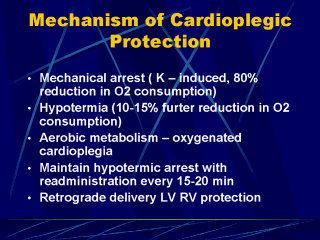 |
Since its
introduction into clinical practice by Bigelow et al. at the University of Toronto over 40
years ago, hypothermia (the cooling of the myocardium) has remained the gold standard for
intraoperative myocardial protection. The goal of this technique is to decrease myocardial
metabolism during the ischemic period once the aorta is cross-clamped and blood flow to
the heart is terminated. Cardioplegia, the elective arrest of cardiac activity, is
necessary during heart surgery to ensure a quiet surgical field. Recently, cardiac
surgeons have used normothermic (37oC) blood cardioplegia as their method of
myocardial protection, based on principles developed by Salerno et al. at McGill
University and later continued at the University of Toronto. The aim of these normothermic
techniques is to minimize myocardial ischemia bycontinuously supplying oxygen and warm
blood to the arrested heart. This allows aerobic resuscitation of injured myocardium.
Moreover, normothermic blood cardioplegia avoids many of the adverse effects caused by
hypothermia, such as the depletion of high-energy phosphates and delays in the recovery of
metabolism and function following reperfusion. |
